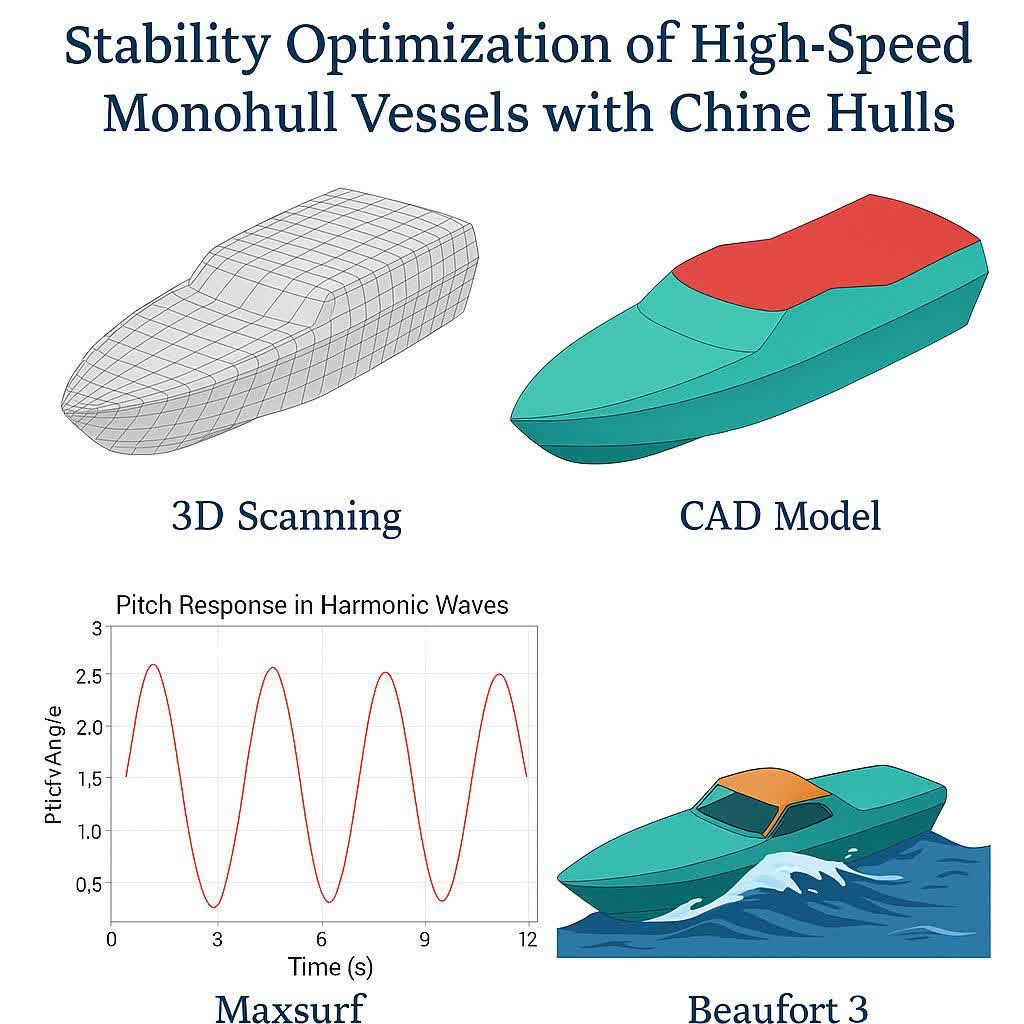Volume 21, Issue 1 (1-2025)


Abstract
(2133 Views) |
Full-Text (PDF)
(754 Downloads)
|
Graphical Abstract
|
Highlights

Highlights
- A combined computational and experimental approach was used to optimize the hydrodynamic performance and stability of high-speed monohull vessels with chine hulls.
- 3D scanning, AutoCAD modeling, and Maxsurf simulation techniques were employed to precisely reconstruct hull geometry and evaluate performance under varying sea conditions.
- At a 5.4° trim angle, pitch motion increased by 33–48% in harmonic waves, while yaw and roll motions rose up to 75× and 83× respectively in beam seas, indicating significant stability concerns.
- Water ingress occurred at Beaufort levels 2 and 3 only at 5.4° trim, with Motion Sickness Incidence (MSI) reaching a peak of 12.5% under Beaufort 3, impacting crew comfort.
- Minimum resistance was observed at 5.22 knots, while trim angles above 5.4° enabled speeds beyond 60 knots but required significantly more power due to increased resistance.
- Manual trim adjustment mechanisms (e.g., jack-equipped outboard engines) effectively mitigated hydrodynamic inefficiencies, offering a practical solution for real-time stability control.
|
Audio file of the article abstract [MP3] (94 Download)
Abstract
(2091 Views) |
Full-Text (PDF)
(770 Downloads)
|
Graphical Abstract
|
Highlights
Highlights
- A detailed 3D scan and modeling of a fiberglass high-speed craft prototype enabled the reconstruction and refinement of hull geometry for performance analysis.
- Hydrostatic and hydrodynamic calculations revealed that a minimum trim angle of 1.25° (5/4°) is required to exceed 60 knots, while preserving maneuverability and stability.
- The optimal resistance was observed at approximately 5.22 knots, beyond which resistance sharply increased, requiring enhanced propulsion strategies.
- Hull and internal layout modifications, including transom wall elevation and inner keel cover adjustments, were necessary to prevent water ingress during high-trim operation.
- A minimum of 475 hp effective power is needed to reach the design speed; a safety factor of 1.25 results in the use of two 300 hp engines.
- Outboard engines equipped with manual trim jacks allow fine-tuning of trim settings in real-time, minimizing startup resistance and improving planing conditions.
|
Audio file of the article abstract [MP3] (88 Download)
Export as:
HTML
|
XML
|
RSS










































